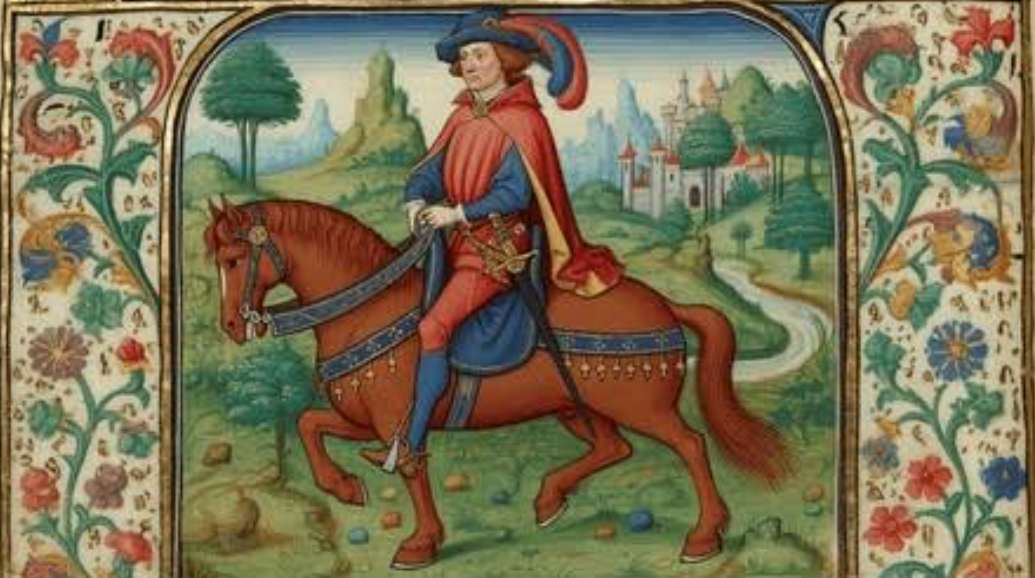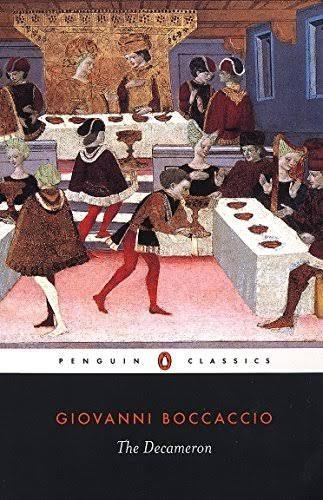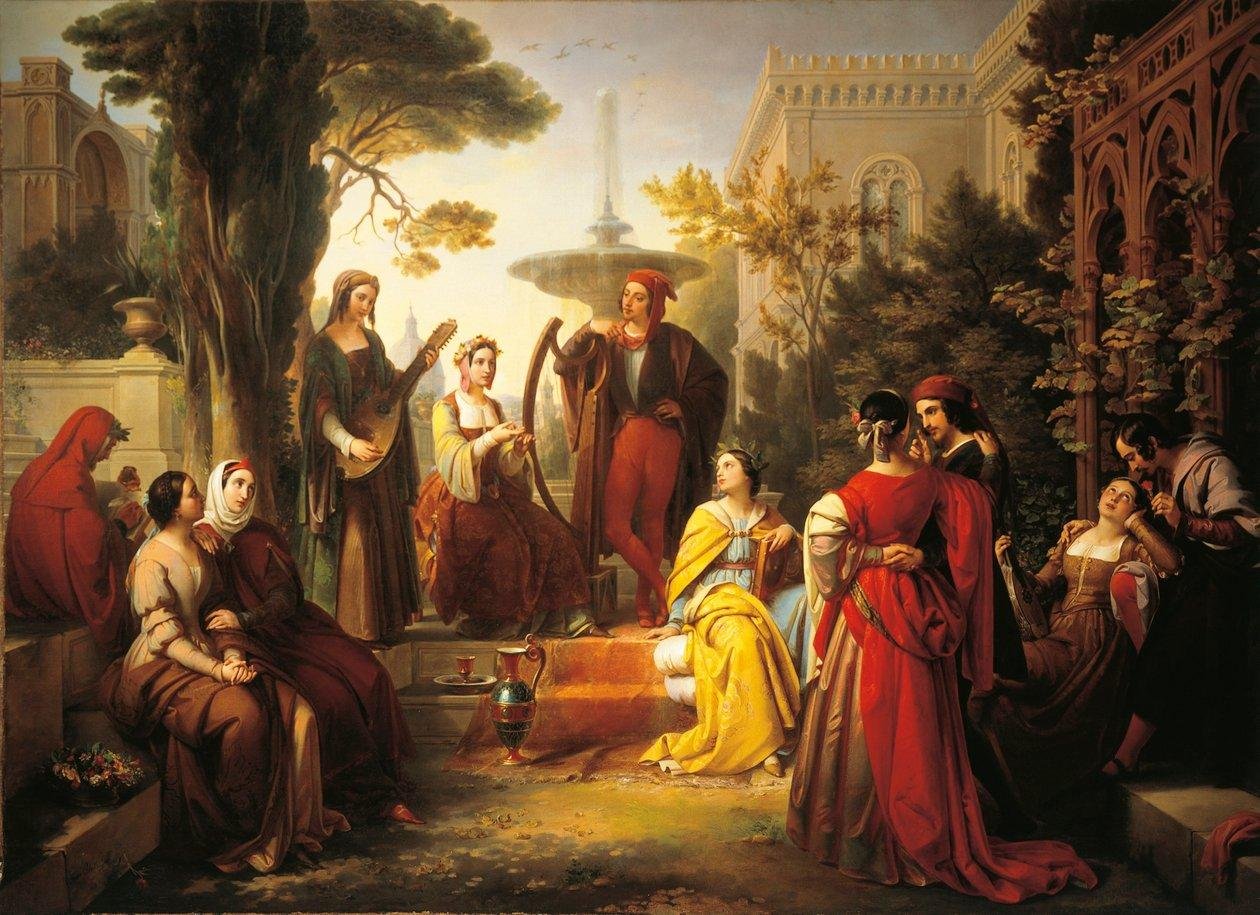"Buried Truths and Reborn Wisdom: The Journey of Andreuccio in Boccaccio’s Naples"

Introduction:
Giovanni Boccaccio’s The Decameron is renowned for its dynamic portrayal of human nature across all social classes, exposing the follies, ambitions, and vulnerabilities of individuals in times of moral and social uncertainty. Among the tales, the story of Andreuccio of Perugia (Day II, Tale 5) offers a compelling account of a young man’s descent—both literal and metaphorical—into the underworld of Naples and his unexpected transformation through adversity. Far from a simple comic tale of trickery and revenge, this narrative captures the journey from ignorance to self-awareness. Through deceit, danger, and unlikely fortune, Boccaccio weaves a tale that highlights the necessity of adaptability, the illusion of appearances, and the capacity for personal growth when tested by misfortune.
Summary:
Andreuccio, a young horse trader from Perugia, travels to Naples intending to buy horses, proudly carrying a large sum of money. His inexperience quickly makes him vulnerable to the deceptions of a beautiful woman who, pretending to be his long-lost sister, invites him into her home. Once he is asleep, she robs him of his money and has him thrown out, naked and humiliated. Wandering through the city, Andreuccio encounters two thieves who convince him to assist in robbing the tomb of a recently buried archbishop believed to be interred with a valuable ring. During the heist, Andreuccio is lowered into the tomb, only to be abandoned once again. Yet, in the darkness of this literal grave, he discovers the ring and a hidden exit. He emerges richer, wiser, and far more cautious than he had been at the tale’s beginning.
Analysis:
Boccaccio’s tale is structured around a descent-and-rebirth motif, drawing on classical and Christian symbolism. The tomb functions not only as a physical space of death and decay but also as a crucible for transformation. Andreuccio’s fall—first into the clutches of the duplicitous woman, then into the literal grave—is a symbolic death of his former self: naive, proud, and unprepared. His eventual emergence parallels a rebirth, marked by the acquisition of both worldly knowledge and material gain. This structure reflects a thematic progression central to many tales in The Decameron: folly leads to wisdom, but only if the character survives and reflects.
The tale’s success also lies in its balance of suspense and irony. Boccaccio crafts moments of high tension—the robbery, the betrayal, the entrapment—punctuated by dark humor and dramatic reversals. The very skills Andreuccio lacks at the start—street smarts, skepticism, restraint—are forced upon him through humiliating and dangerous encounters. His eventual triumph is not due to a change in fortune alone, but to his quick thinking inside the tomb, showing growth in judgment and self-reliance. The irony of his situation is biting: what begins as a journey to acquire horses ends in a near-death experience that yields something far more valuable—wisdom earned the hard way.
The characters themselves are sharply drawn and serve symbolic as well as narrative purposes. Andreuccio represents youthful ambition, the perils of overconfidence, and the vulnerability of innocence in a world driven by appearances and trickery. The woman who deceives him is not merely a villain but a symbol of the seductive dangers of the unfamiliar. The grave robbers, while criminal, provide a brief opportunity for Andreuccio to shift from victim to participant in his own fate. In this way, Boccaccio presents the city of Naples as moral terrain: a dangerous maze where one must learn to navigate treachery or be consumed by it.
In the context of the 14th century, the tale reflects growing anxieties about social mobility, trade, and trust in urban environments. Andreuccio’s identity as a merchant places him within the rising middle class—ambitious, mobile, and exposed to risks beyond traditional social norms. Boccaccio subtly critiques both the romanticized ideal of noble virtue and the reality of urban corruption. The tale’s relevance extends into the modern era, where individuals are still deceived by false identities, manipulated by appearances, and challenged to think on their feet when misled. In both digital and physical spaces, the ability to recover from betrayal and assert agency remains as crucial as ever.
Personal Response:
What stands out most in this tale is its complex portrayal of learning through adversity. Unlike many moral tales where virtue is rewarded through passivity or divine intervention, Andreuccio’s survival depends on his ability to adapt, remain calm, and think critically under pressure. This realistic depiction of growth through failure gives the story lasting emotional power. The tomb scene is particularly compelling—not just for its suspense, but for its symbolism. Watching a naive young man emerge from literal darkness with new insight feels both ancient and entirely contemporary. There is satisfaction in witnessing not just poetic justice, but personal transformation that is earned, not granted.
Conclusion:
Boccaccio’s The Story of Andreuccio of Perugia is more than a tale of theft and fortune; it is a narrative of evolution forged through the fires of deception and hardship. By allowing his protagonist to fall, suffer, and learn, Boccaccio honors the human capacity to grow in the face of adversity. The story’s layered use of irony, symbolic structure, and social insight ensures its continued relevance, offering modern readers not only entertainment but a mirror to their own vulnerabilities and potential. In an unpredictable world, the ability to recover, learn, and act wisely remains one of the most enduring virtues—and this tale captures that truth with both humor and heart.








